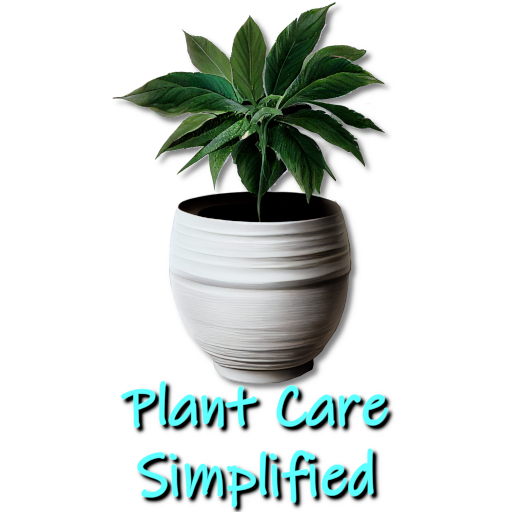Growing a Lipstick Plant from Seed
Kim is passionate about helping people create beautiful, healthy indoor spaces that are filled with plants. Kim believes that plants make us happier, healthier human...
The Appeal of Growing Lipstick Plants from Seeds
- Lipstick plant seeds require warm temperatures between 70-75°F (21-24°C), and high humidity levels and are crucial for the successful germination of Lipstick plant seeds.
- Two techniques to improve seed germination rates are scarification and stratification.
- Lipstick plant seeds can remain viable for several years if stored properly in a cool, dry place.
Growing a lipstick plant from seed can be a rewarding experience for gardeners. Not only is it cost-effective, but it also allows for greater genetic diversity among plants. Additionally, there is a certain satisfaction that comes from nurturing a plant from seed to maturity.
Below, we will discuss the life cycle of lipstick plants (Aeschynanthus) and the factors that influence successful germination. We will consider where to obtain lipstick plant seeds and provide a step-by-step guide on how to do so successfully. In addition, we shall also weigh the pros and cons of growing lipstick plants from seeds, known as sexual propagation, and provide a step-by-step guide on how to do so successfully. Finally, we can go over and answer some frequently asked questions about cultivating lipstick plants from seed.
Understanding the Life Cycle of Lipstick Plants
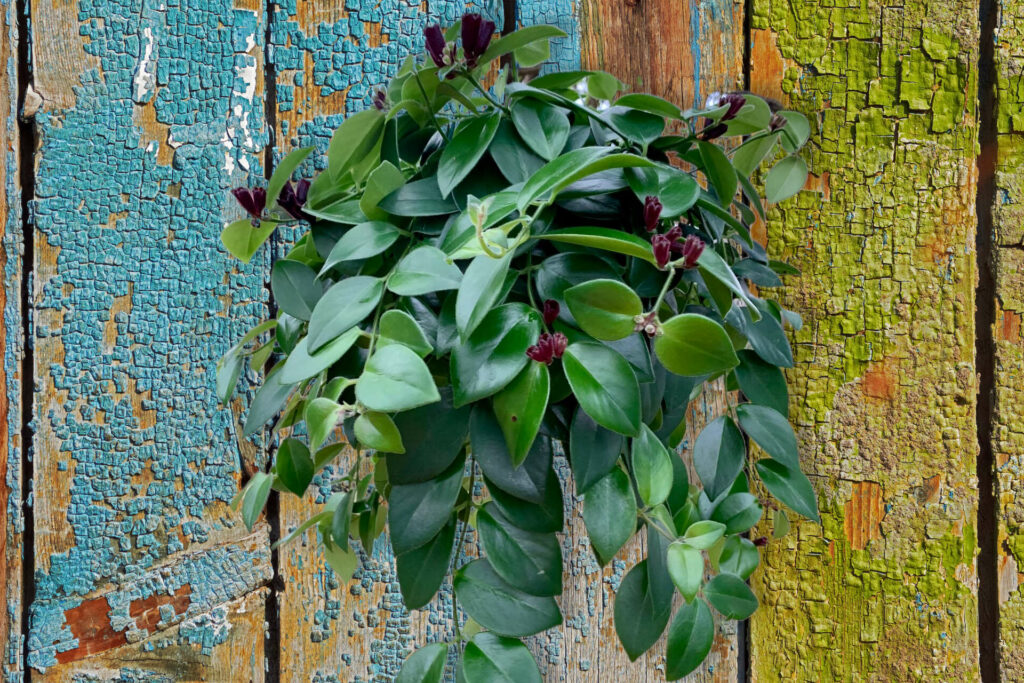
The Seed Germination Process
The first step in growing lipstick plants from seed is to understand the germination process. Germination is the process by which a seed sprouts and begins to grow into a new plant. For lipstick plant seeds, this process typically takes several weeks and is influenced by factors such as temperature, humidity, light conditions, and soil type.
Factors Influencing Successful Germination
Temperature and Humidity Requirements
Temperature and humidity play a crucial role in the germination of lipstick plant seeds. These seeds require warm temperatures between 70-75°F (21-24°C) and high humidity levels to germinate successfully.
Light Conditions
Light is another important factor in the germination of lipstick plant seeds. These seeds require bright, indirect light to germinate successfully.
Soil Type and Preparation
The type of soil used for germinating lipstick plant seeds is also important. A well-draining seed starting mix that is rich in organic matter is ideal for these seeds.
Scarification and Stratification Techniques
Scarification and stratification are techniques used to improve the germination rates of certain seeds, including lipstick plant seeds. Scarification involves breaking or weakening the seed coat to allow water to penetrate more easily, while stratification involves exposing the seeds to cold temperatures for a period of time to simulate winter conditions.
Timeline for Seed Growth and Development
Once the seeds have been sown and provided with optimal conditions, they will begin to germinate within several weeks. The seedlings will then continue to grow and develop over the course of several months before reaching maturity.
Sourcing Lipstick Plant Seeds

Where to Get the Seeds From
Lipstick plant seeds are very small, but they can be sourced from reputable seed suppliers, and sometimes garden centers, and online marketplaces. When sourcing seeds, be sure to look for fresh, viable seeds.
Harvesting Seeds from Your Own Lipstick Plant
If you already have a mature lipstick plant, you can also harvest seeds from it. The pods of lipstick plants are elongated and resemble beans, dangling from the stem. Some lipstick plant varieties have seed pods that exceed a foot in length and take several months to ripen.
When the pods are mature, they dry out and split open along their length, releasing seeds that drift away. Lipstick plant seeds differ from other gesneriad seeds in that they have tiny hairs attached, giving them a fluffy appearance with the seed at the center.
Collecting the seeds is straightforward. You can either wait for the pod to dry out and split open before quickly gathering the seeds or remove the pod when it starts to dry out and split open, placing it in an envelope to catch the seeds when the pod dries out.
Even if you miss the event and the pod splits open and dries out, some seeds usually remain for several weeks or longer. A single lipstick plant pod can contain enough seeds to grow several hundred seedlings.
Best Time of Year to Harvest Lipstick Plant Seeds
The best time of year to harvest lipstick plant seeds will vary depending on the climate and growing conditions of your particular plant. In general, however, lipstick plants typically produce seed pods in the late summer or early fall.
How Long Do Lipstick Plant Seeds Remain Viable
Lipstick plant seeds can remain viable for several years if stored properly. To maximize their viability, store the seeds in a cool, dry place away from direct sunlight and moisture.
Seed Pollination
It is often not just a question of gathering the seeds. If the lipstick plant is outside, this should happen naturally. Indoors you might need to give nature a little help by hand pollinating. The process is fairly simple, using the following basic steps for hand-pollinating a lipstick plant seed:
- Wait until the flower has opened and the anthers (the male part of the flower) have turned yellow.
- Use a soft brush, your fingertip, or a toothpick to gently transfer pollen from one another to the stigma (the female part of the flower).
- Repeat this process with several flowers.
- Once you have pollinated a few flowers, you can leave the rest of the plant to be pollinated by insects.
A few things to remember when for hand-pollinating lipstick plant seeds:
- If the plant is outside, do it on a dry day, as rain can wash away the pollen.
- Be gentle, as you don't want to damage the flower.
- If you are using a brush, make sure it is clean and dry.
- If you are using your fingertip, make sure your hands are clean.
- If you are using a toothpick, make sure it is sharp.
Pros and Cons of Growing Lipstick Plants from Seeds
There are a number of advantages and disadvantages to deciding to propagate lipstick plants using seeds rather than through cuttings.
| Pros | Cons |
|---|---|
| - Greater genetic diversity | - Lengthy germination period |
| - Cost-effective | - Variable plant quality |
| - Satisfying gardening experience | - Seed size can be an issue |
| - Long-term viability if stored properly | - Challenges for beginners |
Advantages of Seed Propagation
Cost-Effectiveness
One advantage of growing lipstick plants from seed is that it can be more cost-effective than purchasing established plants.
Genetic Diversity
Growing lipstick plants from seed also allow for greater genetic diversity among the plants, as each seed has the potential to produce a unique individual.
Satisfying Gardening Experience
Another advantage there is a certain satisfaction that comes from nurturing a plant from seed to maturity. There is nothing like seeing a plant develop from a seed through the germination process into a fully grown Lipstick plant.
Long Teem Viasbility
Finally, growing Lipstick plants from seed has is that once you harvest the seed, idf they are store correctly in dark dry conditions, then the viability of the seed should be at least a tear if not longer giviving you more control over when you choose to propagate.
Disadvantages of Seed Propagation
Seed Size
The first disadvantage is the size and nature of the seeds. If your lipstick plant blooms regularly, you should be able to access plenty of seeds. If it doesn't, then access to enough seeds can be an issue.
Lengthy Germination Period
A further disadvantage of growing lipstick plants from seed is that it can take several weeks for the seeds to germinate.
Variable Plant Quality
Finally, there is the question there can be variability in the quality of the resulting plants. The upsideide is that with a largew number of seeds a certain amount of failure shouldn't matter.
Potential Challenges for Beginners
Growing lipstick plants from seed can also present challenges for beginners, as it requires a certain level of knowledge and skill to do so successfully.
Steps to Successfully Grow Lipstick Plants from Seeds
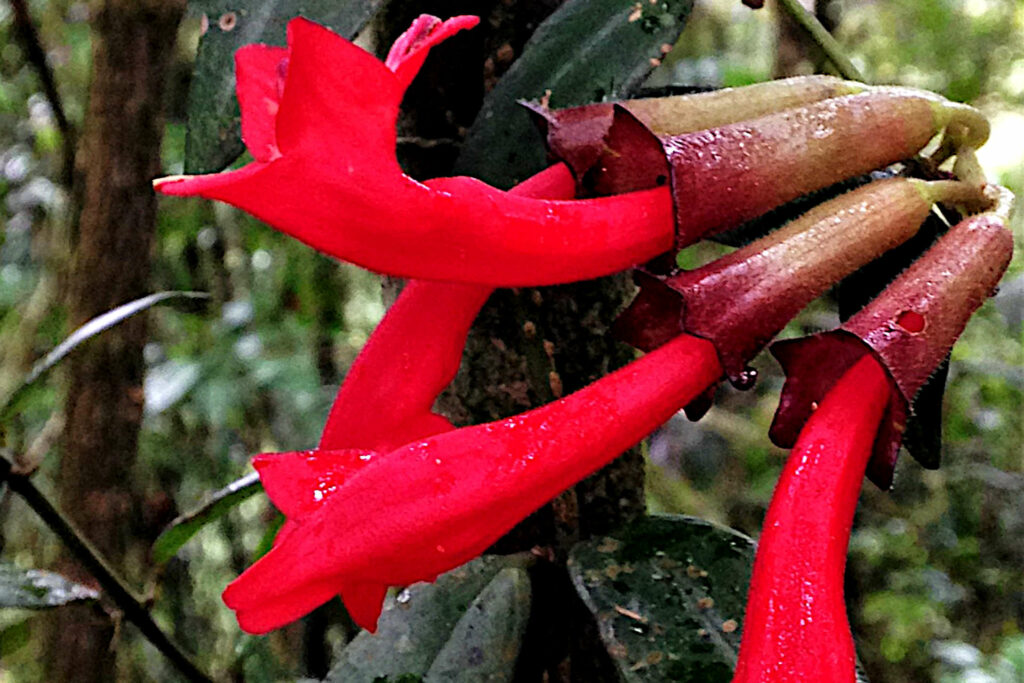
Sourcing Quality Lipstick Plant Seeds
The first step in growing lipstick plants from seed is to source quality seeds. Look for reputable seed suppliers that offer fresh, viable seeds.
Preparing the Planting Materials and Equipment
Once you have obtained your lipstick plant seeds, you will need to prepare the planting materials and equipment. This includes a seed starting mix, containers, and any necessary tools, such as a watering can or spray bottle.
Scarification and Stratification Techniques for Seed Treatment
As mentioned earlier, scarification and stratification techniques can be used to improve the germination rates of lipstick plant seeds. If you choose to use these techniques, be sure to follow the appropriate procedures for each.
Specific Tips for Scarifying Lipstick Plant Seeds
Scarification is a technique that can be used to improve the germination rates of certain seeds, including lipstick plant seeds. Here are some specific tips for scarifying lipstick plant seeds:
- Use a sharp tool such as a knife or nail clippers to nick the seed coat. Be careful not to damage the inner embryo.
- Soak the seeds in warm water for several hours or overnight to soften the seed coat.
- Rub the seeds gently between two sheets of sandpaper to weaken the seed coat.
- After scarifying the seeds, sow them immediately in a well-draining seed starting mix and provide them with optimal conditions for germination.
The only issue is the size of the seeds, being incredibly small, can make the process difficult. But if the seeds are large enough to maneuver easily, following these tips, you can improve the germination rates of your lipstick plant seeds through scarification.
Sowing the Seeds and Providing Optimal Conditions
Seed Spacing and Depth
When sowing lipstick plant seeds, it is important to space them appropriately and sow them at the correct depth. Follow the instructions provided by the seed supplier for the best results.
Temperature and Humidity Control
As mentioned earlier, temperature and humidity play a crucial role in the germination of lipstick plant seeds. Be sure to provide the seeds with warm temperatures between 70-75°F (21-24°C) and high humidity levels.
Light Exposure and Intensity
Light is another important factor in the germination of lipstick plant seeds. Provide the seeds with bright, indirect light for best results.
Watering Guidelines
When cultivating Lipstick plants from seed, ensuring an optimal watering regimen is crucial for successful germination and growth. Here's a guide to the best watering practices for these vibrant plants:
- Consistent Moisture: Lipstick plant seeds thrive in consistently moist soil. However, it's essential to avoid waterlogging, which can lead to seed rot. Use a well-draining potting mix to ensure excess water drains away.
- Watering Depth: When watering, ensure the water reaches the depth where the seeds are planted. This encourages the roots to grow deeper, providing a stable foundation for the plant.
- Misting: In addition to regular watering, consider misting the soil surface lightly. This helps maintain surface moisture, especially during the initial stages of germination.
- Water Quality: Use room-temperature distilled or rainwater. Cold water can shock the seeds, while tap water might contain chemicals that can hinder germination.
- Monitor Soil Dryness: Stick a finger about an inch into the soil. If it feels dry, it's time to water. Over time, you'll develop a sense for when the soil needs moisture.
- Adjust According to Seasons: During warmer months, the soil tends to dry out faster. You might need to water more frequently. Conversely, in cooler months, reduce the watering frequency.
- Water Stress Awareness: Research suggests that the water status of the mother plant can substantially affect seed quality. Seeds from plants that experienced terminal drought might exhibit more rapid quality development and higher maximum seed quality.
- Consider Seed Coating: Some studies indicate that coating seeds with certain essential oils can enhance the plant's water and nutrient status, potentially improving drought resistance
Fertilization
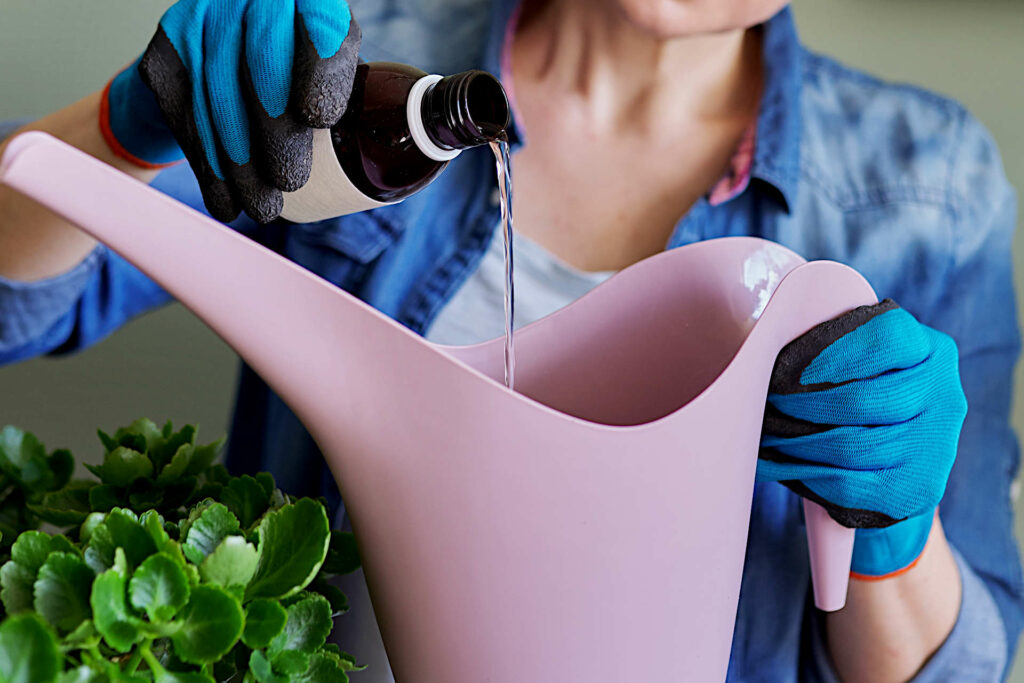
In order to facilitate optimum growth enduring the Lipstick plant seeds have a good supply of nutrients. There are numerous options but a balanced fertilizerin terms of Nitrogen, phosophorous, potasium (NPK) is usually the correct choice. Of these you can gecide betwwn organic and synthetic fertilizers.
Organic Fertilizers: Derived from natural sources like compost, bone meal, or worm castings, organic fertilizers release nutrients slowly, ensuring a steady supply for your seeds. They improve soil structure, fostering a healthy environment for root growth. Moreover, they're eco-friendly, reducing the risk of environmental pollution. However, they might not always provide a balanced nutrient profile, which can be crucial for the initial stages of seed germination.
Synthetic Fertilizers: These are chemically formulated to provide a precise nutrient mix. They act fast, giving your Lipstick plant seeds an immediate boost. Being water-soluble, they're easy to apply, ensuring that your seeds receive the right amount of nutrition at the right time. But, there's a catch. Over-reliance can lead to nutrient burn or buildup of harmful salts in the soil. Plus, they don't enhance the soil's organic matter, which is vital for long-term plant health.
Monitoring the Seedlings’ Growth and Progress
Once the seeds have been sown and provided with optimal conditions, it is important to monitor their growth and progress. Keep an eye on the seedlings and provide them with any necessary care as they continue to grow and develop.
Transplanting the Seedlings into Individual Pots
Once the seedlings have reached a certain size, they can be transplanted into individual pots to continue their growth and development.
Germination Timeline for Lipstick Plants
| Week | Expected Growth Stage | Care Tips |
|---|---|---|
| 1 | Seed sowing | Ensure the soil is consistently moist but not waterlogged. Place in a warm location with indirect light. |
| 2-3 | Initial sprouting | Continue to maintain soil moisture. Avoid direct sunlight to prevent seedlings from burning. |
| 4-5 | True leaves appear | Begin to reduce watering frequency slightly. Ensure good air circulation to prevent fungal issues. |
| 6-8 | Strong seedling growth | Consider transplanting to a larger pot if roots are visible at the bottom. Start a mild fertilizing regimen. |
Speed up Seed Germination
The growing method can be altered by pre-germinating the seeds, taking a small amount of seed fluff, and gently pushing it into a moist or damp medium, such as a damp piece of kitchen paper or sponge, and then covering it. The seeds will germinate and then can be transferred to a small pot or even to Rockwool.
As they grow, seedlings will appear different from their parent plant, with leaves that are slightly different in shape and markings; this is known as juvenile foliage. Observing seedlings grow and mature is a gratifying experience that can teach you much about the plant’s development.
Ways to Increase the Germination Success Rate of Lipstick Plant Seeds
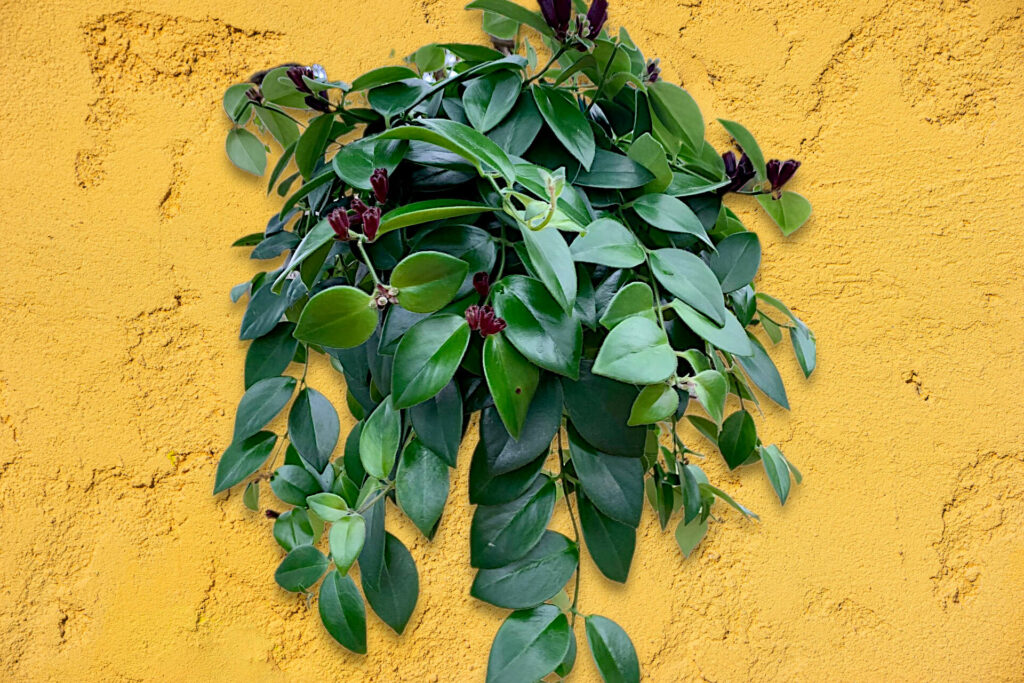
There are several ways to increase the germination success rate of lipstick plant seeds. These include providing the seeds with optimal conditions for germination, using scarification and stratification techniques, and sourcing quality seeds from reputable suppliers.
Providing Optimal Conditions for Germination
As mentioned earlier, providing the seeds with optimal conditions such as warm temperatures, high humidity, and bright, indirect light can help to improve germination rates. Be sure to monitor the seeds closely and make any necessary adjustments to their environment to ensure that they are receiving the best possible conditions for germination.
Using Scarification and Stratification Techniques
Scarification and stratification techniques can also be used to improve the germination rates of lipstick plant seeds. Scarification involves breaking or weakening the seed coat to allow water to penetrate more easily, while stratification involves exposing the seeds to cold temperatures for a period of time to simulate winter conditions. If you choose to use these techniques, be sure to follow the appropriate procedures for each.
Sourcing Quality Seeds from Reputable Suppliers
Finally, sourcing quality seeds from reputable suppliers can also help to increase the germination success rate of lipstick plant seeds. Look for suppliers that offer fresh, viable seeds for the best results.
Troubleshooting Common Issues in Seed Germination
When propagating Lipstick plants from seeds, you might encounter a few bumps along the way. However, with a keen eye and the right knowledge, you can address these challenges head-on.
Temperature Fluctuations: One of the primary culprits behind unsuccessful germination is inconsistent temperature. Lipstick plant seeds thrive in a warm environment, ideally between 70-75°F (21-24°C). If you notice your seeds aren't sprouting, consider investing in a seedling heat mat to maintain consistent warmth.
Inadequate Moisture: While high humidity levels are essential for germination, overwatering can lead to seed rot. On the flip side, too little moisture can prevent germination altogether. Strive for a balance by ensuring the soil remains consistently moist but not waterlogged.
Poor Seed Quality: Not all seeds are created equal. If you've sourced your Lipstick plant seeds from an unreliable vendor, they might not be viable. Always procure seeds from reputable sources and store them in a cool, dry place to maintain their viability.
Light Conditions: Some seeds require light to germinate, while others prefer darkness. Lipstick plant seeds aren't particularly fussy about light during germination, but providing them with indirect light can boost their chances of sprouting.
Key Takeaways: Growing a Lipstick Plant from Seed
Above, we have looked at in detail the possibility of growing lipstick plants from seed and provided a comprehensive guide on how to do so successfully. Topics covered topics include seed size, acquisition, the life cycle of lipstick plants, factors that influence successful germination, and steps to follow when growing these plants from seed.
Final Thoughts on the Viability of Growing Lipstick Plants from Seeds
There is no doubt that growing lipstick plants from seed is a viable option for gardeners who are willing to put in the time and effort required to do so successfully. With proper care and attention, it is possible to grow healthy, vibrant lipstick plants from seed with varieties such as Aeschynanthus pulcher and Aeschynanthus radican, achieving full height in about 2-5 years.
Commonly Asked Questions
How long does it take for lipstick plant seeds to germinate?
The germination period for lipstick plant seeds can vary but typically takes several weeks. Providing the seeds with optimal conditions such as warm temperatures, high humidity, and bright, indirect light can help to improve germination rates.
Can I propagate lipstick plants through other methods besides seeds?
Yes, lipstick plants can also be propagated through methods such as stem cuttings or division. These methods can be faster and more reliable than growing the plants from seed.
Where can I purchase lipstick plant seeds?
Lipstick plant seeds can be purchased from reputable seed suppliers or online from places such as Etsy. Look for suppliers that offer fresh, viable seeds for best results.
What are the common challenges faced when growing lipstick plants from seeds?
Some common challenges faced when growing lipstick plants from seed include providing the seeds with optimal conditions for germination, monitoring the seedlings’ growth and progress, and transplanting the seedlings into individual pots.
Are there any specific tips for increasing germination success rates?
To increase the germination success rates of lipstick plant seeds, be sure to provide the seeds with optimal conditions such as warm temperatures, high humidity, and bright, indirect light. Scarification and stratification techniques can also be used to improve germination rates.
References
- Annals of Botany: Irrigation and Seed Quality Development in Rapid-cycling Brassica: Seed Germination and Longevity
Kim is passionate about helping people create beautiful, healthy indoor spaces that are filled with plants. Kim believes that plants make us happier, healthier human beings, and she loves sharing her knowledge with others so they can experience the joys of plant care for themselves. <a href="https://plantcaresimplified.com/kim-marson/">Read more</a>
More Posts